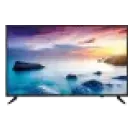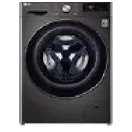The typical lifespan of an
LED TV largely depends on the quality of the components used and the operating conditions. On average, a well-maintained LED TV can last between 50,000 to 1,00,000 hours, which translates to about 5 to 10 years of regular use. Android TVs, a popular category within LED TVs, share similar lifespans, but longevity can vary based on usage patterns and technological advancements.
Some high-end models may offer a slightly longer life, but heavy usage, improper settings, or extreme environmental factors can reduce their overall lifespan. To ensure you get the most out of your Android TV, regular maintenance and optimising settings for brightness and contrast can help preserve its longevity.
Factors affecting LED TV lifespan
- Usage hours: The more frequently the LED TV is used, the quicker its components wear out, which can shorten its lifespan.
- Brightness settings: Keeping your television at a high brightness level can strain the LEDs, leading to reduced longevity.
- Heat and ventilation: Poor ventilation can cause the television to overheat, damaging internal components and shortening the television’s lifespan.
- Power surges: Frequent power fluctuations or surges can damage your LED TV, making a surge protector essential for extending its life.
- Manufacturer quality: TVs from reputable brands often use higher-quality components, which contribute to a longer lifespan.
LED TV lifespan comparison table
| TV type | Expected lifespan | Price Range |
| LED TV | 5-10 years | Moderate |
| OLED TV | 7-10 years | Higher |
| QLED TV | 6-8 years | Moderate to high |
| Plasma TV | 5-7 years | Lower to moderate |
Learn about the typical lifespan of an LED TV and the factors affecting it
The lifespan of a
4K LED TV can vary depending on several factors, including usage habits, environmental conditions, and the quality of components used in manufacturing. Typically, LED TVs are built to last between 50,000 and 1,00,000 hours, which amount to around 5 to 10 years with regular usage. However, some may experience degradation in picture quality over time, particularly in brightness levels.
Several factors can influence the longevity of your LED TV. One of the most significant factors is usage. TVs that are kept on for extended hours daily will experience more wear and tear, reducing their lifespan. Additionally, environmental conditions such as excessive heat or poor ventilation can cause internal components to deteriorate faster, while frequent power surges can damage sensitive circuitry.
Another critical factor is how well the TV's settings are optimised. Running the TV at high brightness or contrast levels consistently can accelerate the wear of the backlight. To maximise the lifespan of your 4K LED TV, it is important to keep the settings balanced, ensure proper ventilation, and use a surge protector to guard against power fluctuations. Proper care and regular maintenance can significantly extend the life of your TV, allowing you to enjoy high-quality visuals for many years.
Financing options with Bajaj FinservYou can find all the information you need about the LED TV,
OLED TV price, features, characteristics, and details online on
Bajaj Mall. Visit your closest Bajaj Finserv partner store to choose your affordable smart TV when you have acquired the necessary data. To make payments, use the preapproved card limit on the Bajaj Finserv EMI Network Card. Determine a convenient payback period and make interest-free instalment payments.
Advantages of shopping using the Bajaj Finserv EMI Network Card- Competitive prices: Bajaj Finserv’s partner stores offer competitive pricing, ensuring your LED TV purchase is budget-friendly.
- Zero down payment: Enjoy the convenience of no initial lump sum payment, as select products, including the LED TV, are covered under the zero down payment policy.
- Options and accessibility: Buying your favourite products has never been easier. The Bajaj Finserv EMI Network offers a vast range of products at partner stores across multiple cities.
- Exciting deals and cashback offers: Use the Bajaj Finserv EMI Network Card to purchase your LED TV and gain access to exciting deals and cashback offers.
- Free home delivery: For added convenience, select products, including the LED TV, come with free home delivery.











